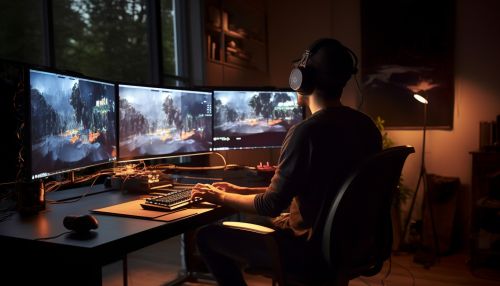The Science of Human Cognitive Styles in Virtual Reality
Introduction
Human cognitive styles refer to the preferred way an individual processes information. This can be influenced by personality traits, biological factors, and environmental influences. Cognitive styles are often categorized into two broad types: field-dependent and field-independent. Field-dependent individuals are more likely to perceive an overall concept, while field-independent individuals tend to focus on individual components. The study of cognitive styles in the context of virtual reality (VR) is a relatively new field of research, aiming to understand how these styles influence the way we interact with and perceive virtual environments.


Cognitive Styles
Field-Dependent and Field-Independent
Field-dependent individuals have a global perception style, meaning they perceive and interpret information as a whole. They are more likely to rely on external frames of reference and have a strong tendency to be socially oriented. On the other hand, field-independent individuals have an analytical perception style, focusing on individual components rather than the overall structure. They rely more on internal frames of reference and are more self-oriented.
Other Cognitive Styles
There are several other cognitive styles that have been identified, including reflective and impulsive styles, leveling and sharpening memory styles, and visual and verbal cognitive styles. Reflective individuals tend to take more time to make decisions and consider multiple aspects of a situation, while impulsive individuals make quick decisions with less consideration. Leveling individuals tend to remember events as being more similar than they actually were, while sharpening individuals remember events as being more distinct. Visual individuals prefer to process information visually, while verbal individuals prefer to process information verbally.


Virtual Reality
Virtual reality is a simulated experience that can be similar to or completely different from the real world. It is typically achieved through the use of VR headsets or multi-projected environments that generate realistic images, sounds, and other sensations. VR has been used in a variety of fields, such as gaming, education, healthcare, and training.
Immersion and Presence in VR
Immersion in VR refers to the technical capability of the VR system to deliver an environment that is perceived as real. Presence, on the other hand, refers to the psychological response to being in a virtual environment. It is the sense of "being there" in the virtual world. Both immersion and presence are influenced by the individual's cognitive style.


Cognitive Styles in Virtual Reality
Research has shown that cognitive styles can significantly influence how individuals interact with and perceive virtual environments. For example, field-dependent individuals may find it more challenging to navigate virtual environments due to their global perception style. They may also be more prone to experiencing cybersickness, a condition similar to motion sickness that can occur in virtual environments.
On the other hand, field-independent individuals, with their analytical perception style, may find it easier to navigate virtual environments. They may also be less prone to experiencing cybersickness. However, they may find it more challenging to engage with social aspects of virtual environments due to their self-oriented nature.
Other cognitive styles, such as reflective and impulsive styles, leveling and sharpening memory styles, and visual and verbal cognitive styles, can also influence how individuals interact with and perceive virtual environments. For example, reflective individuals may take more time to make decisions in virtual environments, while impulsive individuals may make quick decisions. Leveling individuals may perceive events in virtual environments as being more similar than they actually are, while sharpening individuals may perceive events as being more distinct.


Implications for VR Design
Understanding the influence of cognitive styles on VR experiences can have significant implications for VR design. For example, VR systems could be designed to adapt to the user's cognitive style, providing a more personalized and effective experience. This could involve adjusting the level of detail, complexity, and interactivity of the virtual environment based on the user's cognitive style.
For field-dependent individuals, VR systems could provide more guidance and support to help them navigate the virtual environment. For field-independent individuals, VR systems could provide more opportunities for exploration and discovery. For reflective individuals, VR systems could provide more time for decision-making, while for impulsive individuals, VR systems could provide immediate feedback.


Conclusion
The study of human cognitive styles in virtual reality is a burgeoning field of research with significant potential implications for VR design. By understanding how cognitive styles influence VR experiences, designers can create more effective and personalized VR systems. However, more research is needed to fully understand the complex interplay between cognitive styles and VR experiences.
See Also
Cognitive Psychology Virtual Reality in Education Cybersickness User Experience Design in Virtual Reality
